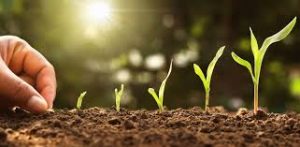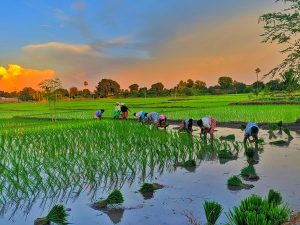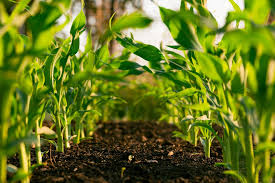Agriculture is the practice of cultivating plants and raising animals for food, fiber, fuel, and other products used to sustain and enhance human life. It includes activities such as:
- Growing cropslike wheat, rice, corn, and vegetables
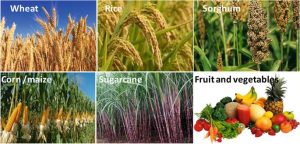
- Raising livestock such as cows, sheep, goats, pigs, and poultry
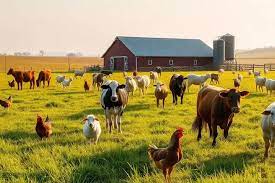
- Forestry and fish farming in broader agricultural contexts
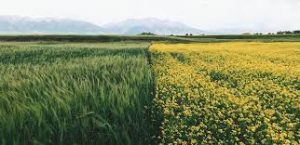
Agriculture is a fundamental part of human civilization and is essential for food security, economic development, and rural livelihoods.
India’s agricultural sector is vast and diverse, with several states leading in the production of various crops. Based on recent data,Organic Farming A Sustainable Approach to Agriculture the top five agricultural states in India, considering their overall contribution to crop production, are:
1. Uttar Pradesh
- Major Crops: Wheat, rice, sugarcane, pulses, and oilseeds.
2. Punjab
- Major Crops: Wheat, rice, sugarcane, fruits, and vegetables.
3. Madhya Pradesh
- Major Crops: Wheat, rice, soybeans, pulses, and oilseeds.
- Highlights: Madhya Pradesh is a leading producer of wheat and soybeans, contributing significantly to India’s food grain and oilseed production
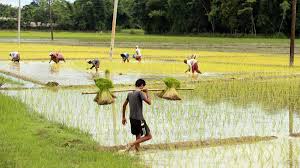
4. West Bengal
- Major Crops: Rice, jute, tea, potatoes, and vegetables.
5. Maharashtra
- Major Crops: Sugarcane, cotton, pulses, and oilseeds.
- Highlights: Maharashtra is a significant producer of sugarcane and cotton, contributing notably to India’s sugar and textile industries Organic Farming A Sustainable Approach to Agriculture
- These states play a crucial role in India’s agricultural landscape, each contributing uniquely to the nation’s food security and economy.
- Recent Developments in Indian Agriculture
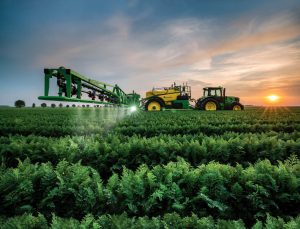
- The term “agricultural” is an adjective that relates to agriculture, which means it describes anything connected to farming or the cultivation of land and raising of animals.
For example:
- Agricultural land = land used for farming
- Agricultural tools = tools used in farming
- Agricultural practices = methods used in growing crops or raising livestock
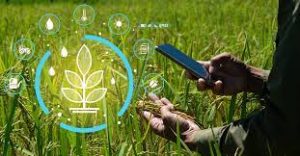
If you’re asking what agriculture is called as a field or area, it is simply called:
- Agriculture (noun)
- In academic or professional terms, it may also be referred to as agricultural science or agronomy, depending on the specific focus (e.g., crop science, soil science, etc.).
Let me know if you’re asking for a translation or explanation in a different context.
Agriculture notes are written summaries or study materials that cover important topics related to agriculture. These notes help students, farmers, researchers, or anyone interested in agriculture to understand key concepts, practices, and facts easily.
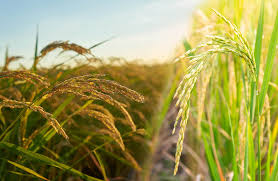
What agriculture notes typically include:
- Definitions and explanations of agriculture and related terms
- Types of farming and crops
- Soil types and preparation methods
- Irrigation techniques
- Crop cultivation and harvesting
- Animal husbandry basics
- Use of fertilizers and pesticides
- Modern agricultural tools and technology
- Problems and challenges in agriculture
- Government schemes and policies related to farming
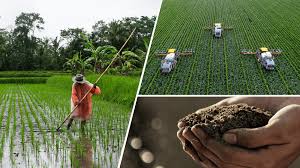
In short, agriculture notes serve as a handy resource for learning or teaching agriculture efficiently. Would you like me Organic Farming A Sustainable Approach to Agriculture to prepare some agriculture notes on a specific topic?
It is a vital sector of the Indian economy and plays a crucial role in providing food, employment, and raw materials to the country.
Key points about Indian agriculture:
- Major employer: About 50% of India’s workforce depends directly or indirectly on agriculture for their livelihood.Organic Farming A Sustainable Approach to Agriculture.
- Monsoon-dependent: Indian agriculture largely depends on the monsoon rains, which makes it vulnerable to climate variability.
- Small and marginal farmers: The majority of Indian farmers own small plots of land, which affects productivity and income.
- Traditional and modern methods: Farming in India includes traditional methods alongside modern techniques like mechanization, use of fertilizers, and improved seeds.
- Irrigation: India uses various irrigation methods such as canals, tube wells, and tanks to support farming.
6.Livestock: Animal husbandry, including cattle, buffalo, goats, and poultry, is an important part of Indian agriculture.
7.Government support: The Indian government provides subsidies, minimum support prices, and schemes to support farmers.
8.Challenges: Indian agriculture faces challenges like fragmented land holdings, water scarcity, soil degradation, and market access issues.
9.Contribution: Agriculture contributes about 15-18% to India’s GDP and is crucial for food security.
